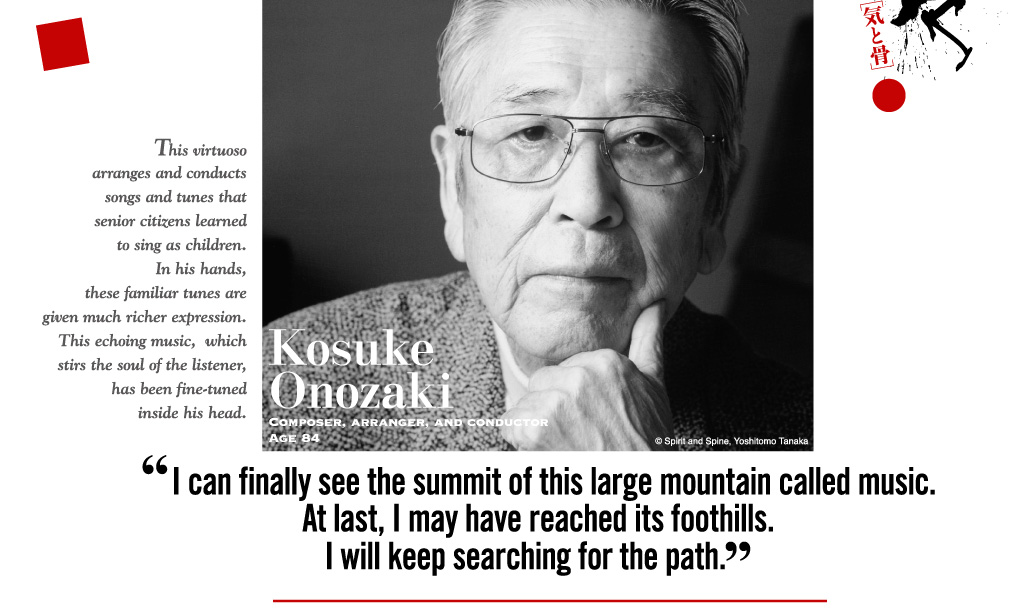When he starts on a musical arrangement, he does not immediately sit down at the piano. Doing so would only produce the sounds that his hands want to play, he tells us. He does not like to leave everything to feelings alone, without any ideas, when he works. Instead, he faces a piece of music head on, and works up the overall concept. He imagines the background, and pays close attention to the feelings and ideas that the composer included in the music. At the end of this deep interpretation, he can hear the music playing inside his head. He composes a score with the parts allocated to the different instruments. Even if he feels that it has been refined sufficiently, if he does not like it when he looks it over again the next day, he tears it up. The solitary work of transferring the music inside his head to sheets of paper covered with five lines continues.
As a conductor, after repeated rehearsals for concerts comes the actual performance, where there is no room for mistakes. Recording sessions involve everything from the choice of performers, and conducting and recording in the studio, right through to the final adjustments to the master version. Transmitting the music that he heard in his head to the listener is an arduous task filled with responsibility, which requires going through a highly exhausting process of creation.
“Geniuses leave behind their works, but their minds pass away. In order to learn how they thought while creating these works, we have to retrace the steps of our predecessors, and begin to walk in them for ourselves” says the accomplished musician, looking back over the steep road he has traveled.







































































































